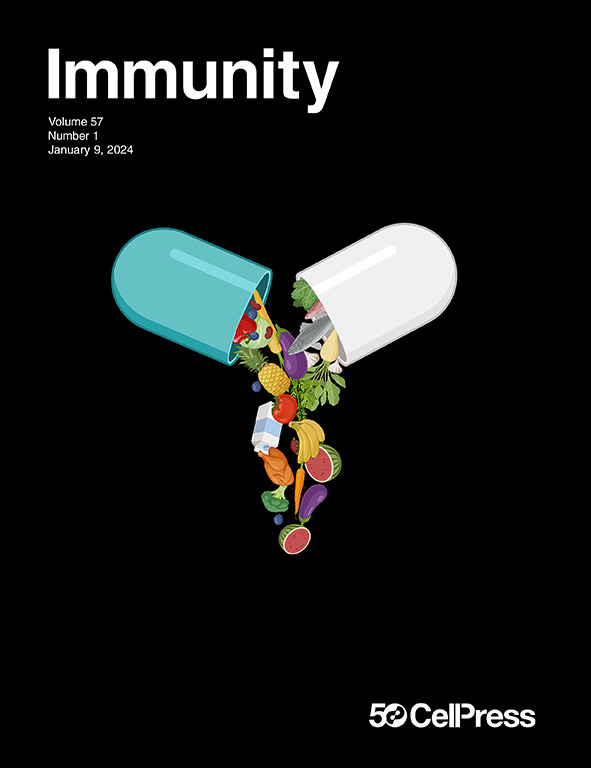NK常驻记忆细胞是由NK细胞在组织中积累而产生的,不受持续局部感染的影响
IF 25.5
1区 医学
Q1 IMMUNOLOGY
引用次数: 0
摘要
Gasteiger及其同事最近的一项研究描述了在局部病毒(牛痘病毒)和细菌(金黄色葡萄球菌)感染后,循环的自然杀伤(NK)细胞群被招募并保留在皮肤中数周。这些细胞,作者称之为组织常驻(tr)NK细胞,在再次攻击时表现出效应分子(干扰素[IFN]-γ,颗粒酶B [Gzmb],穿孔素[Prf1])的增加,表明在增强病原体中起作用。这项工作得到了澳大利亚国家卫生和医学研究委员会(NHMRC 2004397, 1119298,和2026377)的资助。利益声明作者声明无利益冲突。本文章由计算机程序翻译,如有差异,请以英文原文为准。
NK resident memory cells arise from NK cells that accumulate in tissues independently of persistent local infection
Section snippets
Main text
A recent study by Gasteiger and colleagues1 described a population of circulating natural killer (NK) cells that are recruited and retained in the skin for several weeks following local viral (vaccinia virus) and bacterial (Staphylococcus aureus) infections. These cells, which the authors refer to as tissue resident (tr)NK cells, exhibit increased production of effector molecules (interferon [IFN]-γ, granzyme B [Gzmb], perforin [Prf1]) upon re-challenge, suggesting a role in enhanced pathogenAcknowledgments
The work was supported by funding from the National Health and Medical Research Council of Australia (NHMRC 2004397, 1119298, and 2026377).Declaration of interests
The authors declare no competing interests.求助全文
通过发布文献求助,成功后即可免费获取论文全文。
去求助
来源期刊

Immunity
医学-免疫学
CiteScore
49.40
自引率
2.20%
发文量
205
审稿时长
6 months
期刊介绍:
Immunity is a publication that focuses on publishing significant advancements in research related to immunology. We encourage the submission of studies that offer groundbreaking immunological discoveries, whether at the molecular, cellular, or whole organism level. Topics of interest encompass a wide range, such as cancer, infectious diseases, neuroimmunology, autoimmune diseases, allergies, mucosal immunity, metabolic diseases, and homeostasis.
 求助内容:
求助内容: 应助结果提醒方式:
应助结果提醒方式:


